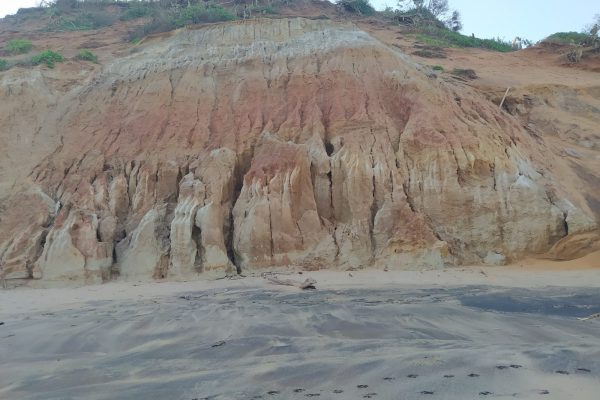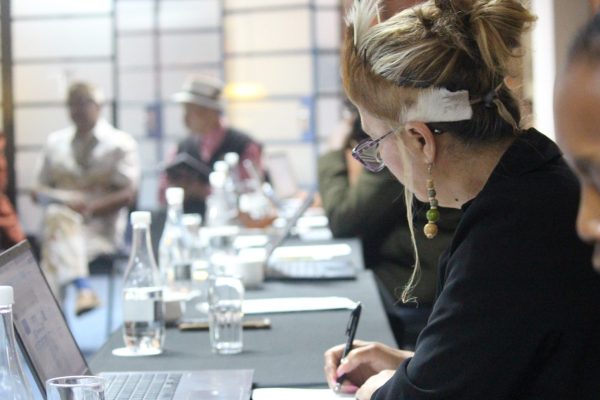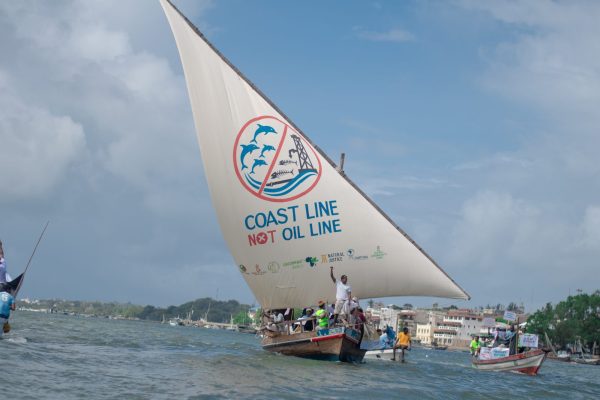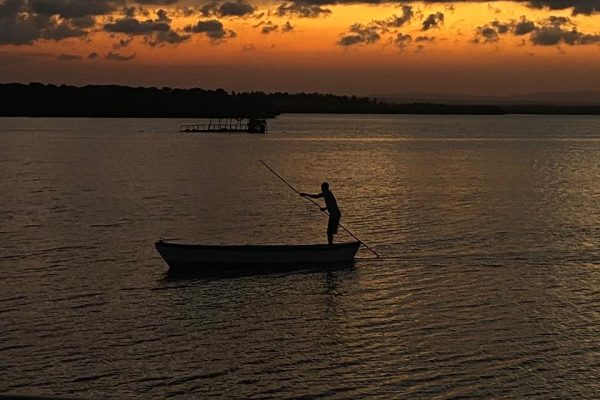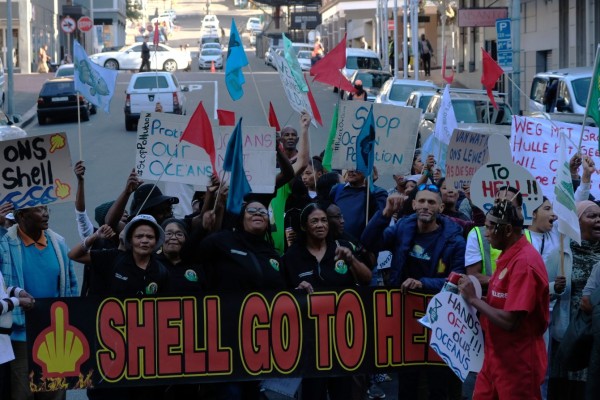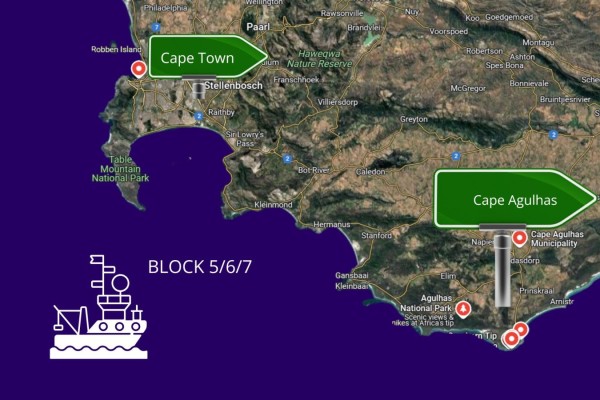Over the past six weeks, I have been repeatedly reminded that the world’s approach to development is disingenuous. While this is not new to anyone, from the meeting rooms of South Africa to the coastal belt of Kenya, I have had first-hand experience of the myopic nature of those that are deciding on our future. If they continue to make the decisions for us, we will be on a race to the bottom.
It began at the Alternative Mining Indaba in Cape Town where community activists came together from across the continent to talk about what was happening in their communities. The picture was largely the same. It was a story of mine workers struggling to make ends meet, health issues within the communities, contamination of the rivers and other water sources, and companies that make big promises that they never deliver. The fact that most companies cannot even stick to the “do no harm” principle, generally means they are not doing any good, either.
One of the activists at the Alternative Mining Indaba pleaded with the people attending for solidarity and support for communities in the Lutzville area of the Western Cape. This call was made again as we marched to the Investing in Africa Mining Indaba which was taking place at the Cape Town International Convention Centre. At this Indaba, South African President Cyril Ramaphosa made this startling remark in a speech: “The country’s mineral wealth has attracted large capital investments over the decades, resulting in the development of integrated industrial value chains that generate significant value for the economy. We are firm believers that the South African mining industry is a sunrise industry”.
Given that mining has been the backbone of the South African economy for approximately 133 years, it is hard to understand how it is a “sunrise industry”, unless President Ramaphosa sees the future of mining going on for decades longer. But where will we be then? Let’s reflect for a moment on what mining has provided for this country. South Africa is officially the most unequal country in the world, the official unemployment rate hovers around 27 percent, with much higher unofficial estimates, more than 30 million South Africans live on less than R1000 a month and one in four people go hungry to bed. Women are at the coalface of the inequality and bear the brunt of the violence, unpaid care work, unequal pay and, yet, are responsible for the next generation.
A few days later I leave for Lutzville. The community activists had called to say the Minister of Mineral Resources, Gwede Mantashe, was going to Lutzville for a community consultation and I wished to heed their call for solidarity. During the four-hour drive, there is a lot to reflect on. I think about the current state of the planet, how the majority of people in South Africa have been robbed of a future, how the current thinking about mining and other projects does not differ in any way from how business has been done for centuries and how people across South Africa, Africa and the globe are standing up and pushing for a fundamental shift. If fundamental change does not happen soon, we will be forced to anyway, given the extensive destruction to the planet which we a part of (and not apart from).
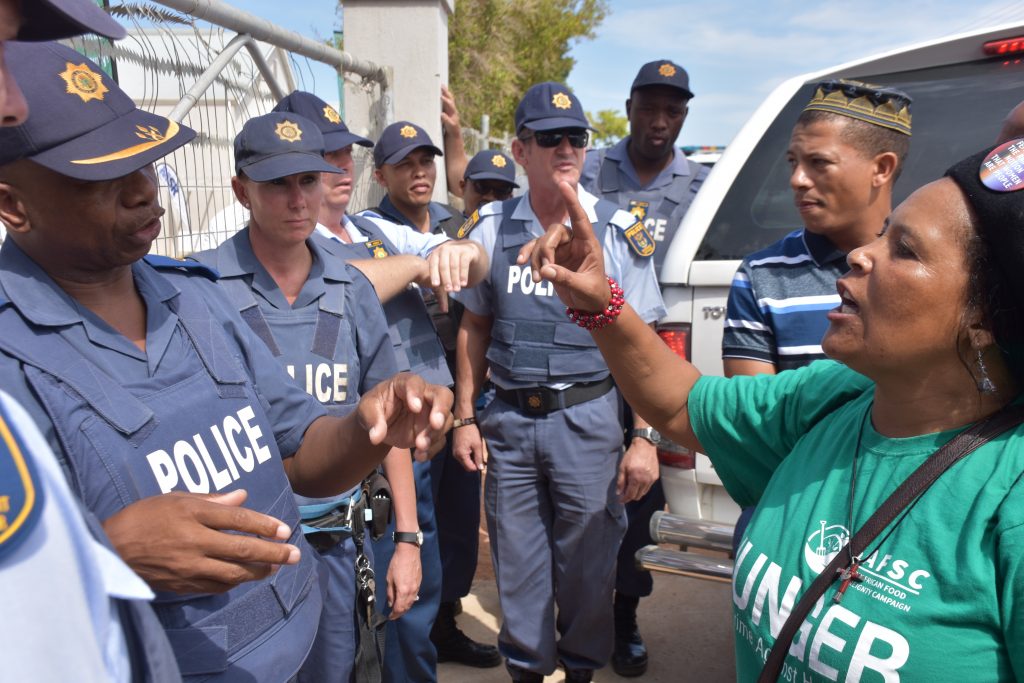
On their website, Mineral Commodities Limited (MRC), an Australian Mining company, describes the area where its Tormin mine is situated as, “a world-class placer beach mineral sands deposit, hosting some of the richest concentrated grades of naturally occurring zircon, ilmenite, rutile, magnetite and garnet.” I arrive at the community hall in Lutzville, but the doors are locked and the community is barred entrance. We are told that the Minister is meeting with the Tormin officials. Police line the gates and the fences. On the inside, police officers walk past brandishing their automatic weapons. Minister Mantashe eventually comes to the gate to try and ease the tension. He speaks to the community through the fence while he and the mining officials stand safely protected. He informs the community that he will first go with the mining officials to the mine and then return to address them. My first thought is, ‘Who is the Minister representing? Was he not elected by the people of South Africa to represent us, and not the interests of an Australian mining company’?
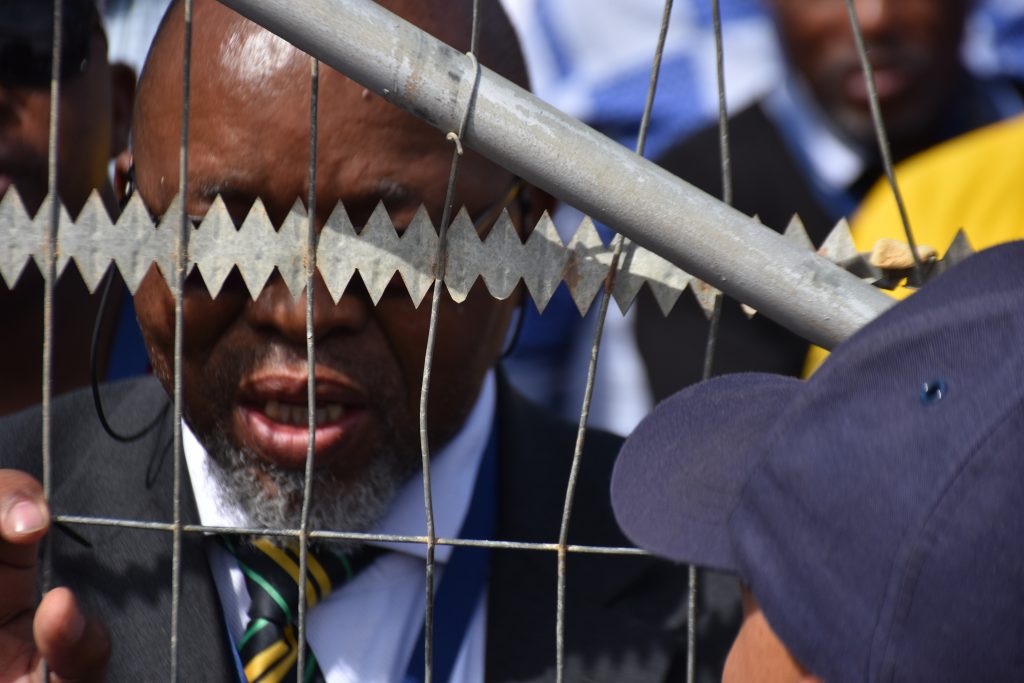
The mining and ministerial motorcades leave the hall, weaving through the community members outside, on their way to the mine. I managed to visit the mining operation and got a full tour of the mining operation by Mark Curuso. Australian mining executive and entrepreneur, Mark Caruso, heads Perth-based mining company, Mineral Commodities Ltd (MRC), that has two business interests in South Africa: a proposed ilmenite mine at Xolobeni on the Wild Coast, and the other, this working mineral sands mine, Tormin, on the West Coast.
It was shocking to see the extent of the damage to the sea cliffs and beach. When I asked about what happens to the tailings, I was told that it is recycled. But as we walked towards the beach, I saw two massive black pipes leading directly from the tailings dam into the ocean. This is an area of biodiversity that is crucial to South Africa. Worse still, they have applied for a licence to mine another 10 beaches on the West Coast.
During the consultation meeting later that day, most community members lamented the broken promises, horrific labour practices, the absence of benefits to the community, and the environmental damage caused by the mine. The Minister did the dance of chastising the mining bosses and encouraging them to speak to the community. A mere slap on the wrist for a company that is violating the provisions of their licence and causing massive damage to the environment.
The following week I travelled to Kilifi County on the Kenyan coast. Travelling by car through the area of Magarini, I am accosted by another shocking sight: 40 kilometres of coastline taken over by salt mining operations. In most places, the ocean has been brought inland by about 3 kilometres across the 40 kilometres. This has resulted in people being evicted from their land, small-scale farmers and fishers’ livelihoods devastated, rivers cut off from the ocean, rivers that are now dying, mangroves killed, and school and home water sources contaminated. These operations started some 40 years ago and many new salt pans are still to be developed.
The same week, I travel to meet with communities in Lamu. In Lamu Town on Amu Island, a World Heritage Site based on it being one of the oldest Swahili settlements, and where the culture and way of life has been preserved, life is about to change fundamentally. The future may hold a massive 32 berth port, a proposed coal mine, industrial zone, oil and gas discoveries, a massive highway, rail and an oil pipeline, all on their doorstep. Mainland farmers woke up one morning to find bulldozers flattening their land without their knowledge. They had to take a physical stand against these giant machines. The people of Lamu are not against development but they want to be consulted; they want to contribute to decisions that involve their land. The want the types of development that are sustainable and add value, not those that destroy their lives and livelihoods.
From this gritty reality, the following week I am transported to the United Nations Environment Assembly. When I look at the climate science and the recent reports from the UN, I am struck by how serious the situation is, and yet, it felt as if it is business-as-usual at one of the most important environmental meetings internationally. Climate scientists are saying the 12-year window is closing and that we need to fundamentally transform the way we are currently operating. The reality is that we are sleepwalking. My mind was blown by the scale of money going into geoengineering. This is largely being funded by the usual suspects, the same companies who are the largest carbon emitters. They argue that the climate warming will last at least a thousand years and that geoengineering might be the only way to turn down Earth’s thermostat. Harvard’s solar geoengineering programme argues that climate engineering with stratospheric sulfate aerosol injections (SSAI) has the potential to reduce risks of injustice related to anthropogenic emissions of greenhouse gases. There are experiments being carried out in Tibet to manipulate rain clouds and essentially control them to benefit specific areas of certain countries. The power they could wield by doing so is frightening. There are potentially devastating negative impacts to the people and planet of a scale not imaginable. It is clear that some of these projects are being developed to allow industries to continue to pollute. It is a flawed basis from which to operate and very dangerous.
The following week, I am driven on the virtually unpassable roads of the Eastern Cape to the sand dunes of Xolobeni on the Wild Coast of South Africa. I am travelling to join a number of other supporters of the Xolobeni community for a Human Rights Day celebration. There was a powerful ceremony on the dunes that MRC, the Australian mining company, is planning to mine. The community has held firm against the mine for a decade, even though activists opposing the mine have been targeted, murdered and are under constant threat. The community had a major victory in the Pretoria High Court towards the end of last year, when the court ruled that Free, Prior and Informed Consent is required from the community before any operation starts. Unsurprisingly, even after the case which the Minister of Mineral Resources, Gwede Mantashe, has taken on appeal, he is attempting to force the community to consent to the mining. The community has been consistently clear: they do not want the mine. The want investments in farming, fishing and eco-tourism. They want services from the government, not from a mining company from Australia.
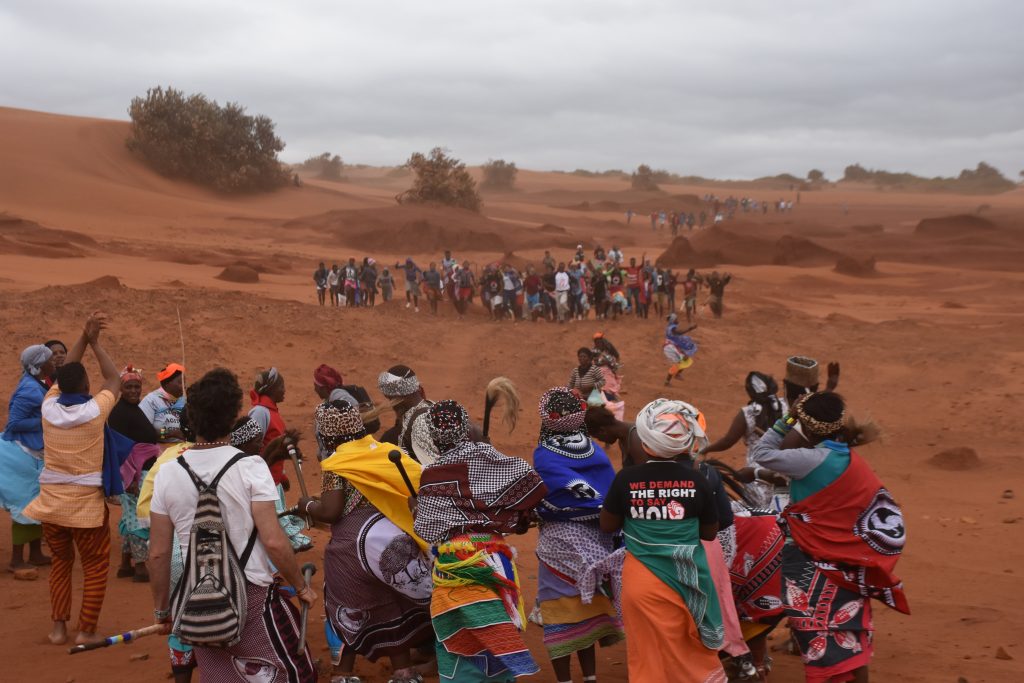
If a democracy is a true democracy, it would be obvious that an elected represented of the people will represent the interests of the people and not those of one specific mining company. There was an amazing Human Rights Day celebration, hosted by the Amadiba Crisis Committee, where activists from mining communities across South Africa came together in an act of massive solidarity. It is a defining moment in South Africa. Communities from across the country standing together and saying ‘enough is enough’. The ceremony on the dunes and the show of solidarity from South Africans attending the Human Rights Day celebrations shows that people are willing to stand together as a country. This was an inspiring act of solidarity for me.
During the final week of this journey I was transported back into a suit to attend the Annual Meeting of the New Development Bank (BRICS Bank). The Bank has capital of $10 Billion raised from its members (us as taxpayers) to fund ‘sustainable’ infrastructure and energy projects. The day started with a protest outside the Cape Town International Convention Centre organised by activists under the ‘BRICS from Below’ banner. Community activists from areas affected by the New Development Bank were part of the protests, including the Durban South communities who will be impacted by the Durban Port Extension in the Clairwood and surrounding areas; community members from Soweto affected by the electricity crisis; and others affected by Eskom projects.
While the New Development Bank is positioning itself as “different” from other International Finance Institutions, the philosophy seems the same. The Bank approved funding of $790 million for three South African projects; with $480 million set aside for Eskom’s Medupi power station. This was approved on the justification that the project includes retrofitting Medupi with flue gas desulphurization units to achieve compliance with the requirements of South Africa’s environmental legislation.
It is common knowledge that the extent of looting of Eskom has brought it to the brink of collapse. A week before the New Development Bank meeting, Eskom Chairperson, Jabu Mabuza, was openly questioning the viability of taking Medupi to completion. A few days after the Bank meeting and the announcement of the loan to Eskom, he announced that the construction of the Medupi and Kusile power stations will go ahead, as the cost of halting the projects will not benefit the economy. The power plants are expected to cost R18 billion each. How much of the loan will be ringfenced for desulphurization, versus getting Eskom out of a financial hole, is not certain.
South Africa needs to stop bailing out carbon-based projects that have failed due to state capture, and focus on the new. Countries like China are using renewables to create 13 million jobs to deal with poverty. Ironically in South Africa and other African countries, Russia and China continue to fund new and proposed coal and nuclear plants.
We have an opportunity in Africa to determine our own path and future. Human rights violations and the destruction of the planet is increasing with the type of development which is happening across Africa. Something has to give. For now, it is the people and the planet being forced to give way for big projects. We need to move away from the competition model to a cooperation model: cooperation with each other and with nature. We are a part of nature and not apart from nature. We cannot be silent as Human and Environmental Rights Defenders are being killed in the hundreds. Two years after anti-mining activist Sikhosiphi “Bazooka” Rhadebe was gunned down on the Wild Coast, no-one has been convicted. Despite the onslaught, communities continue to rise and resist. There is a new generation of young leaders who are emerging to deal with the current crisis. Community resistance and using the law continues to draw a line in the sand. There have been victories along the way like the nuclear deal stopped in its tracks in South Africa, the Ogiek People in Kenya winning a case at the Africa Court on Human and Peoples’ Rights for the right to live in their forest and the fisherfolk in Lamu winning a compensation case around their right to their livelihood and the right to a healthy environment. As we race to the bottom, it is time to catch our collective breath and turn the tide.


